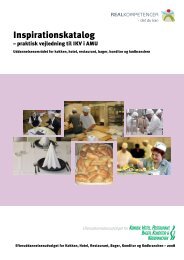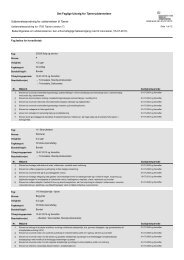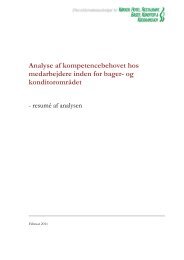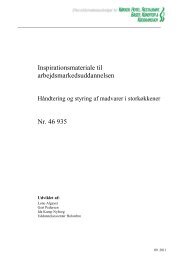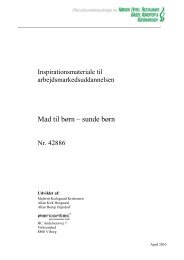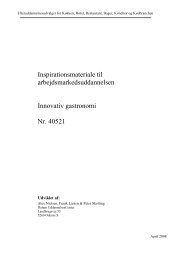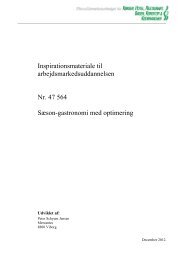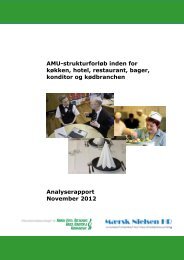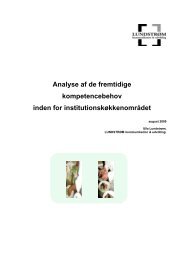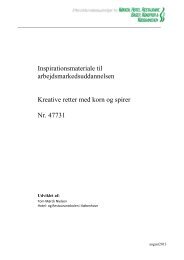General food hygiene - the certificate training
General food hygiene - the certificate training
General food hygiene - the certificate training
Create successful ePaper yourself
Turn your PDF publications into a flip-book with our unique Google optimized e-Paper software.
• You must control <strong>the</strong> temperature with regularly intervals.<br />
• The goods must be placed separated from each o<strong>the</strong>r.<br />
• The goods must be kept covered.<br />
• Frequent cleaning and possibly disinfecting.<br />
***ramme slut<br />
*2 Freezing room - freezer<br />
In a freezing room/freezer a temperature below -18 °C must be kept. Defrosting must be performed<br />
with regular intervals. A thick frost layer on <strong>the</strong> freezing unit can cause problems in keeping <strong>the</strong><br />
temperature below <strong>the</strong> -18 °C.<br />
Goods left for defrosting must always be put in a container, because ”drippings” from a <strong>food</strong>stuff<br />
that defrosts, contains bacteria and <strong>the</strong>se must not be allowed to contaminate o<strong>the</strong>r types of <strong>food</strong>.<br />
*2 Dry depot - dry storage.<br />
In <strong>the</strong> dry storage adequate ventilation must exist to avoid humidity. Humidity gives potential for<br />
mould to develop in many of <strong>the</strong> goods.<br />
There’s a possibility that pests can invade a dry storage. Pests, frequently beetles, could be found in<br />
a lot of grain or flour and spread to o<strong>the</strong>r goods. It might be necessary to throw away large parts of<br />
<strong>the</strong> goods and call for professional help to exterminate <strong>the</strong> pests.<br />
***Foto<br />
A dry storage must be dry.<br />
36




